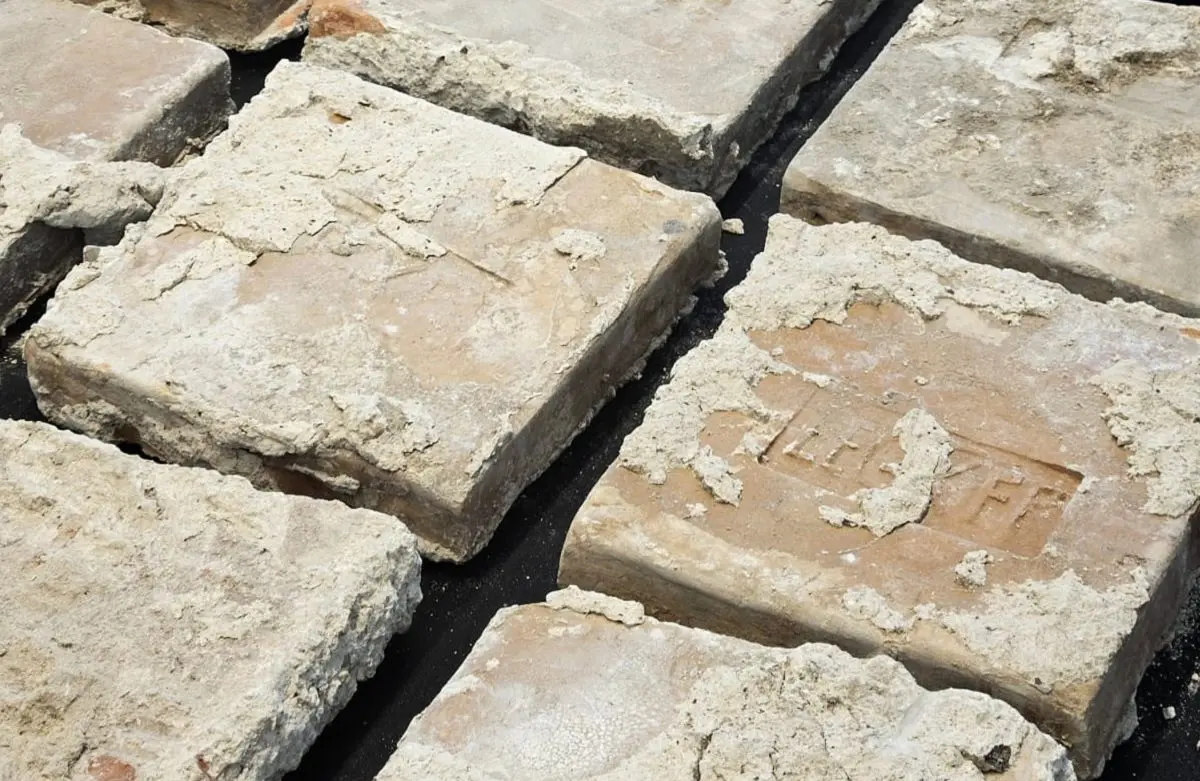Israeli Police in Jerusalem have seized dozens of clay pavement bricks with imprints of the Legio X Equestris during a raid against antiquities smugglers.
The Legio X Fretensis “Tenth legion of the Strait”, was a legion of the Imperial Roman army formed around 41/40 BC. The legion was centrally involved in the Great Jewish Revolt (AD 66–73), the first of three major rebellions by the Jews against the Roman Empire.
By around AD 70, the majority of Roman rule had been reinstated in Judea, with the exception of a few fortresses and the significant city of Jerusalem. The Legio X Fretensis, joined by the V Macedonica, XII Fulminata, and XV Apollinaris legions, lay siege to the city, and after several battles, Jerusalem and the Second Temple was destroyed.
According to contemporary historian, Titus Flavius Josephus, “Jerusalem…was so thoroughly razed to the ground by those that demolished it to its foundations, that nothing was left that could ever persuade visitors that it had once been a place of habitation.”
An operation by police in the Beit Hanina neighbourhood in East Jerusalem has led to the discovery of several cartons in a car trunk containing the pavement bricks. The bricks were likely part of a public building such as a bath house, which has since been looted in modern times for sale in the illegal antiquities trade.
The bricks date from roughly 2,000-years-ago and show the stamp of the Legio X Fretensis from when the legion built a military camp after Jerusalem’s destruction.
Amir Ganor, Director of the Theft Prevention Unit at the Israel Antiquities Authority, said: ” After the uprising, soldiers of the legion settled in the greater Jerusalem area where they constructed workshops to make bricks. The seals of the legion – “LXF” – were imprinted on them to mark the movements of the legion’s units throughout the country. The bulk of the distribution of bricks was identified in the Jerusalem area and in the Roman colony built on its ruins – ‘Aelia Capitolina’.”
Eli Escusido, Director of the Israel Antiquities Authority: “Discovering ancient bricks in the trunk of a car with fresh dirt and being displaced is heart-breaking. If archaeologists had found the bricks on the site itself, we would have been able to gain information for archaeological research as well as add another archaeological site on the historical map of our country. Now, we are left to try and find out through investigative operations where the bricks were dismantled and looted from.”
Header Image Credit : Theft Prevention Unit, Israel Antiquities Authority





